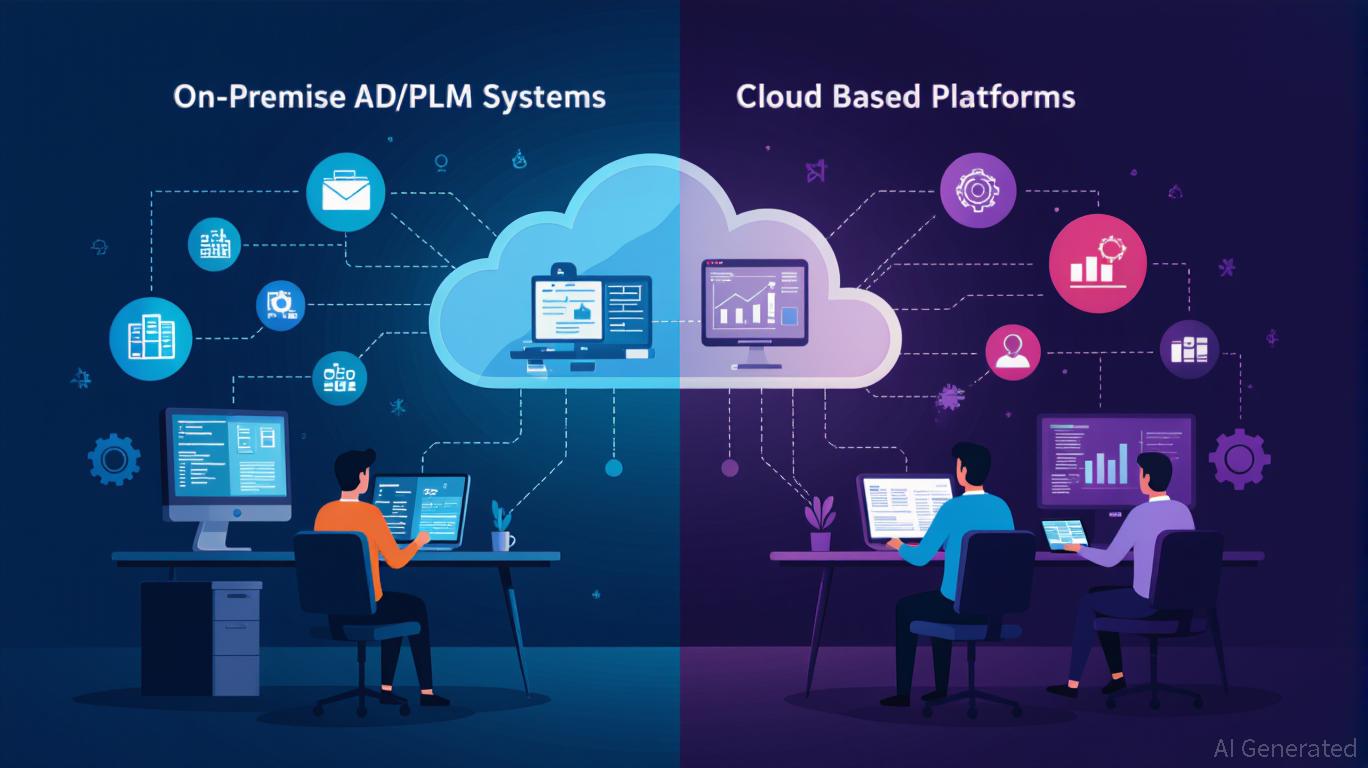AInvest Newsletter
Daily stocks & crypto headlines, free to your inbox
The abrupt withdrawal of Autodesk's potential $20 billion acquisition of
in July 2025 marks a pivotal moment for the CAD/PLM software sector. While the deal's collapse disappointed some investors, it underscores a strategic realignment in the industry—one that prioritizes cloud migration, AI integration, and disciplined capital allocation over megadeals. For investors, this shift opens new opportunities in undervalued rivals and complementary technologies poised to capitalize on a fragmented yet dynamic landscape.
The Autodesk-PTC deal, if completed, would have consolidated two of the sector's largest players, combining Autodesk's cloud-native design tools (e.g., Fusion 360) with PTC's enterprise-focused PLM solutions (e.g., Windchill+) and IoT platforms (e.g., ThingWorx). Its abandonment signals a retreat from the “bigger is better” M&A mindset that has dominated industrial software in recent years.
This shift aligns with broader industry trends. While Siemens, Dassault Systèmes, and others continue to pursue consolidation (e.g., Siemens' $10 billion acquisition of Altair in 2024), Autodesk's pivot highlights a growing recognition of the risks of overextending in complex, costly mergers. The PTC deal's failure, particularly its potential regulatory and integration challenges, serves as a cautionary tale for investors evaluating similarly ambitious transactions.
The withdrawal reshapes the competitive landscape in three key ways:
Autodesk's Reinvention as a Cloud Pure-Play By abandoning the PTC deal,
reaffirmed its focus on cloud and AI-driven tools, where its Fusion 360 and BIM 365 platforms are already gaining traction. This strategy positions it to capitalize on the ongoing shift from on-premise to SaaS models, a transition that remains incomplete in the PLM space.PTC's Vulnerabilities and Opportunities PTC's IoT assets (e.g., Kepware, ThingWorx) now risk becoming non-core distractions as investors demand a sharper focus on its core PLM business. This could pressure PTC to spin off or divest these units—a move that might benefit industrial IoT specialists like
or Emerson.Rivals' Playbook: Siemens and Dassault's Advantage Competitors like Siemens (NX, Teamcenter) and Dassault (CATIA, 3DEXPERIENCE) retain the financial firepower and integration experience to pursue consolidation. Their continued M&A activity (e.g., Dassault's 2024 acquisition of SolidWorks add-ons) may further consolidate their dominance in enterprise PLM.
The Autodesk-PTC fallout underscores two critical long-term trends driving sector valuation:
Cloud Migration: The Great Equalizer Companies like Autodesk and PTC's cloud laggards are under pressure to modernize. Smaller rivals such as Onshape and nTopology are leveraging cloud-native designs to erode traditional CAD/PLM market share. Investors should favor firms with >50% SaaS revenue and clear cloud adoption metrics.
AI Integration: From Hype to Value Creation The real prize lies in AI's ability to automate design processes, predict manufacturing bottlenecks, and optimize supply chains. Autodesk's generative design tools (e.g., Dreamcatcher) and PTC's AI-driven PLM analytics (e.g., Creo AI) are early examples, but execution remains uneven. Firms with proprietary AI datasets and partnerships (e.g., Siemens-NVIDIA collaborations) will gain an edge.
The sector's fragmentation post-Autodesk/PTC creates asymmetric opportunities:
Undervalued Rivals: Dassault Systèmes (EPA:1306): Despite its premium valuation, Dassault's enterprise PLM dominance and AI investments (e.g., 3DEXPERIENCE Works) justify a long-term hold. PTC (NASDAQ:PTC): A speculative play if management executes a disciplined IoT spin-off and focuses on core PLM growth.
Complementary Tech Plays: Cloud Infrastructure Providers: AWS and
Azure (via its Azure Digital Twins) benefit from CAD/PLM's shift to cloud-hosted platforms. AI Specialists: (NASDAQ:NVDA) and startups like Grai Matter Labs (AI for design simulation) could see rising demand from software firms seeking AI differentiation.Smaller, Niche Players: nTopology (NASDAQ:NTP): Its cloud-native generative design tools target aerospace and automotive sectors, areas where traditional CAD vendors struggle with complexity.
Autodesk's decision to walk away from PTC is more than a missed opportunity—it's a strategic acknowledgment that the CAD/PLM sector is at a crossroads. The path forward favors firms that double down on cloud and AI, avoid overpaying for complexity, and prioritize execution over scale. For investors, this means favoring lean, agile players with clear SaaS and AI roadmaps while avoiding conglomerates burdened by legacy systems. The Autodesk-PTC detente isn't just a deal death—it's the start of a new era in industrial software.
Tracking the pulse of global finance, one headline at a time.

Dec.17 2025

Dec.17 2025

Dec.17 2025

Dec.17 2025

Dec.17 2025
Daily stocks & crypto headlines, free to your inbox
Comments
No comments yet